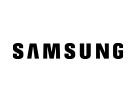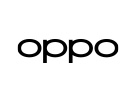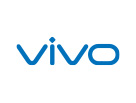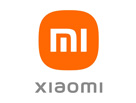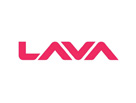The D/E ratio measures how much a company is funded by debt versus how much is financed by equity. Put simply, it compares a company’s total debt obligations to its shareholder equity. The gearing ratio is a measure of financial leverage that demonstrates the degree to which a firm’s operations are funded by equity capital versus debt financing. Debt ratio is very similar to the debt to equity ratio, but as an alternative, it measures total debt against total assets. This ratio provides a measure to which degree a business’s assets are financed by debt.
Based on the following details, you need to assess whether ABC meets the bank’s expectation of gearing ratio. Get instant access to video lessons taught by experienced investment bankers. Learn financial statement modeling, DCF, M&A, LBO, Comps and Excel shortcuts. We will first zero based budgeting forces managers to calculate the total interest and EBIT of the company and then use the above equation.
Why Are Gearing Ratios Important?
Gearing ratios provide an insight into how a company funds its operations, relative to debt and equity. Using gearing ratios as part of your trading fundamental analysis strategy helps to provide crucial financial ratios that can be utilised to make smarter trading decisions. Continue reading to learn about key features of gearing ratios and how they can support your decision-making.
How to Calculate Gearing Ratio
A profitable source documents for accounting transactions company can use borrowed funds to generate more revenues and use the returns to service the debt, without affecting the ownership structure. Investors use gearing ratios to determine whether a business is a viable investment. Companies with a strong balance sheet and low gearing ratios more easily attract investors. Lenders may use gearing ratios to decide whether or not to extend credit, and investors may use them to determine whether or not to invest in a business. Capital-intensive companies or those with a lot of fixed assets, like industrials, are likely to have more debt versus companies with fewer fixed assets.
Equity ratio
Since this is less than 4 and does not meet the bank’s expected ratio, it will now have to provide a guarantor or mortgage of the property as stipulated. By submitting this form, you consent to receive email from Wall Street Prep and agree to our terms of use and privacy policy.
- The net gearing ratio is the most common gearing ratio used by analysts, lenders, and investors.
- A company that possesses a high gearing ratio shows a high debt to equity ratio, which potentially increases the risk of financial failure of the business.
- Investors, lenders, and analysts sometimes use these types of ratios to assess how a company structures itself and the amount of risk involved with its chosen capital structure.
- Such investments require urgent action and shareholders may not be in a position to raise the required capital, due to the time limitations.
A high gearing ratio can be a blessing or a curse—depending on the company and industry. Having a high gearing ratio means that a company is using more debt to fund its operations, which may increase the financial risk. But high ratios may work well for certain companies, especially if they are capital-intensive as it shows they are investing in their growth. Capital that comes from creditors is riskier than money from the company’s owners since creditors still have to be paid back even if the business doesn’t generate income. A company with too much debt might be at risk of default or bankruptcy especially if the loans have variable interest rates and there’s a sudden jump in rates. They include the equity ratio, debt-to-capital ratio, debt service ratio, and net gearing ratio.
As shown by the table above, Walmart has reduced debt in its capital structure over the last five years, from 74% of the equity in 20X4 to just 60% of the equity in 20X8. There are several ways a company can try to indirectly manage and control its gearing ratio, usually by profit, debt and expense management. Below is a screenshot from CFI’s leveraged buyout (LBO) modeling course, in which a private equity firm uses significant leverage to enhance the internal rate of return (IRR) for equity investors. We will first calculate the company’s total debt and then use the above equation.
Suppose a company reported the following balance sheet data for fiscal years 2020 and 2021. We’ll now move to a modeling exercise, which you can access by filling out the form below. A company’s times interest earned ratio is arrived at by dividing its earnings before interest and taxes (EBIT) by its interest expenses. IG International Limited is part of the IG Group and its ultimate parent company is IG Group Holdings Plc.
Gearing ratio analysis
Entities with a high gearing ratio have higher amounts of debt to service. Companies with lower gearing ratio calculations have more equity to rely on for financing. Gearing ratios are used as a comparison tool to determine the performance of one company vs another company in the same industry. When used as a standalone calculation, a company’s gearing ratio may not mean a lot. Comparing gearing ratios of similar companies in the same industry provides more meaningful data. For example, a company with a gearing ratio of 60% may be perceived as high risk.
What Are Gearing Ratios?
A safe gearing ratio can vary by company and is largely determined by how a company’s debt is managed and how well the company is performing. Many factors should be considered when analyzing gearing ratios such as earnings growth, market share, and the cash flow of the company. Net gearing can also be calculated by dividing the total debt by the total shareholders’ equity. The ratio, expressed as a percentage, reflects the amount of existing equity that would be required to pay off all outstanding debts.
Fewer shares outstanding can result in less share dilution and potentially lead to an elevated stock price. For each year, we’ll calculate the three aforementioned gearing ratios, starting with the D/E ratio. If a company were to have a high D/E ratio, the company’s reliance on debt financing to fund its continuing operations is significant. For this reason, it’s important to consider the industry that the company is operating in when analyzing it’s gearing ratio, because different industries have different standards. When looking at a company’s gearing ratio, be sure to compare it to that of similar businesses.
Gearing ratios represent a measure of financial leverage that determines to what degree a company’s actions are funded by shareholder equity in comparison with creditors’ funds. Financial analysts commonly use the gearing ratio to understand the company’s overall capital structure by dividing total debt into total equity. Thus, hindering growth is more of a hindrance to the company’s development. In addition, there are other formulas where the owner’s capital or equity compare against the long-term or short-term debt.
Lenders rely on gearing ratios to determine if a potential borrower is capable of servicing periodic interest expense payments and repaying debt principal without defaulting on their obligations. The formula for the debt-to-equity ratio is equal to total debt divided by total equity. Our Next Generation trading platform offers Morningstar fundamental analysis sheets, which provide quantitative equity research reports for many global shares.
It also includes other interest-bearing liabilities such as pension obligations, lease liabilities, etc. E stands for shareholders equity which includes common stock, additional paid-up capital, retained earnings, irredeemable preferred stock, etc. Conversely, equity ratio gives a measure of how financed a firm’s assets are by shareholder’s investments. A gearing ratio is a financial ratio that compares some owner equity (or capital) form to funds lent by the company. One can also calculate net gearing by dividing the total debt by the shareholders’ equity.

